History
The Old Lifeboat House where we reside has been the Home of Roland L. Whitehead and Daughter Funeral Directors for over 30 years.
We dedicate this page to the History of the Old Lifeboat House and our Funeral Service. We hope you enjoy the information about our history. Our Building receives many visitors and we would be glad to share with you the information we have.
The building was established and served as St. Annes Lifeboat House for 44 years saving 45 lives in the process.
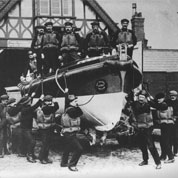
1881 – 1925 St. Annes Lifeboat House
1886 The Mexico Disaster

13 Crew were lost in the disaster an event which resulted in street collections nationally for the R.N.L.I.
The old Lifeboat House served as an Ambulance Station between 1949 and 1974 with the small extension at the front to house the fuel pump.
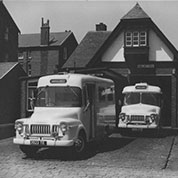
1949 – 1974 Ambulance Station
1992 – 1994 Wrea Green, Old Weighbridge Building
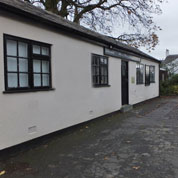
Roland L. Whitehead and Daughter Funeral Directors established in Wrea Green and operated out of the Old Weighbridge Building for two years.
In 1994 Roland moved the business to the Old Lifeboat House and later joined by his Daughter Dawn and now his Grandchildren.
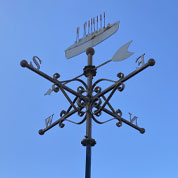
1994 – Present Day The Old Lifeboat House
The Old St. Annes Lifeboat House 1881 - 1925
The Ribble Estuary, which borders St Annes, was notorious for treacherous sandbanks difficult to navigate in bleak weather. Lifeboat stations both north and south of the estuary had already been established by the mid-19th century, but as the new town of St Annes was starting to develop, the advantages of having a station at the mouth of the estuary was apparent.
Towards the end of the 19th century the RNLI (then the National Lifeboat Institute) conducted a thorough survey of the land, and work began on the Eastbank Road site of a new lifeboat station and slipway. Progress was also being made in the construction of a lifeboat for St Annes-on-Sea and in the recruitment of local volunteers to man the lifeboat. The inauguration of the Lifeboat House took place on the same day as the naming of the new lifeboat, Laura Janet, on 24 September 1881.
 St.Annes Lifeboat the LAURA JANET on the Eastbank Road slade (1885).
St.Annes Lifeboat the LAURA JANET on the Eastbank Road slade (1885).
 The Lifeboat Crew in the 1920s with Coxswain Harry Melling centre back with peak cap.
The Lifeboat Crew in the 1920s with Coxswain Harry Melling centre back with peak cap.
 The St.Annes No 1 Lifeboat NORA ROYDS (January 1887 to November 1908) with her crew on board and the crew of the No 2 Lifeboat standing in front.
The St.Annes No 1 Lifeboat NORA ROYDS (January 1887 to November 1908) with her crew on board and the crew of the No 2 Lifeboat standing in front.
 Thomas Henry Rimmer outside St.Annes Lifeboat Station with the crew of the Nora Royds.
Thomas Henry Rimmer outside St.Annes Lifeboat Station with the crew of the Nora Royds.
 St.Annes first Lifeboat the LAURA JANET in front of her boathouse. She was on station from September 1881 to January 1887 but sadly capsized on service on the 9th/10th December 1886 with the loss of her entire crew of 13 while going to the assistance of the Barque MEXICO.
St.Annes first Lifeboat the LAURA JANET in front of her boathouse. She was on station from September 1881 to January 1887 but sadly capsized on service on the 9th/10th December 1886 with the loss of her entire crew of 13 while going to the assistance of the Barque MEXICO.
 The Lifeboat crew in 1908
The Lifeboat crew in 1908
 The NORA ROYDS in front of the Lifeboat House before East Bank Road was tarmaked. Sir Charles Macara. Founder of the “Lifeboat Saturday” movement stands to the right hand side of the wheel. Date?
The NORA ROYDS in front of the Lifeboat House before East Bank Road was tarmaked. Sir Charles Macara. Founder of the “Lifeboat Saturday” movement stands to the right hand side of the wheel. Date?
 The LAURA JANET at the opening of St.Annes Pier on the 15th June 1885
The LAURA JANET at the opening of St.Annes Pier on the 15th June 1885
 The JAMES SCARLETT remained as an exhibition boat after the station closed in 1925 until she was sold for conversion to a fishing boat om October 1928. She had to be moved by road to Lytham where she was launched then went through the canal system to the East Coast.
The JAMES SCARLETT remained as an exhibition boat after the station closed in 1925 until she was sold for conversion to a fishing boat om October 1928. She had to be moved by road to Lytham where she was launched then went through the canal system to the East Coast.
 The JAMES SCARLETT which served until the station closed in 1925.
The JAMES SCARLETT which served until the station closed in 1925.
 The JAMES SCARLETT which arrived in St.Annes in November 1908. Coxswain Tom Rimmer stands in the left foreground.
The JAMES SCARLETT which arrived in St.Annes in November 1908. Coxswain Tom Rimmer stands in the left foreground.
 Colour photograph of the Crew of the St. Annes Lifeboat House.
Colour photograph of the Crew of the St. Annes Lifeboat House.
1886 The Mexico Disaster
When in dark nights of winter, fierce storms of wind and rain
Howl round the cosy homestead, and lash the window-pane;
When over hill and treetop we hear the tempest roar
And hurricanes go sweeping on from valley to the shore;
And those we love the best on earth are gathered in our homes,
Think of the sailors round our coasts who, braving sleet and snow,
Leave sweethearts, wives and little ones when duty bids them go.
Think of our sea-girt Island, a harbour where alone
No Englishman to save a life has failed to risk his own:
Then when the storm howls loudest, pray of your charity
That God will bless the Lifeboat, and the Warriors of the Sea.’
Final verse of ‘The Warriors of the Sea’ by Clement Scott
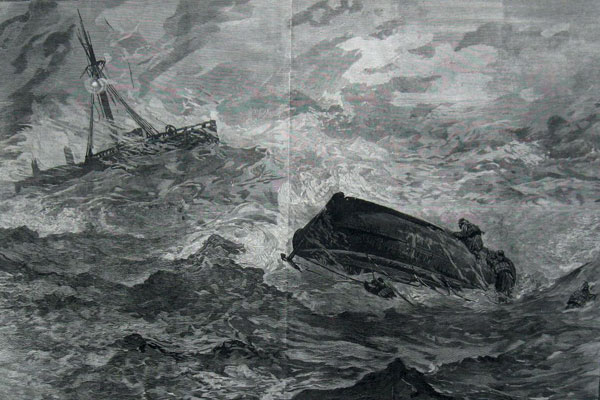
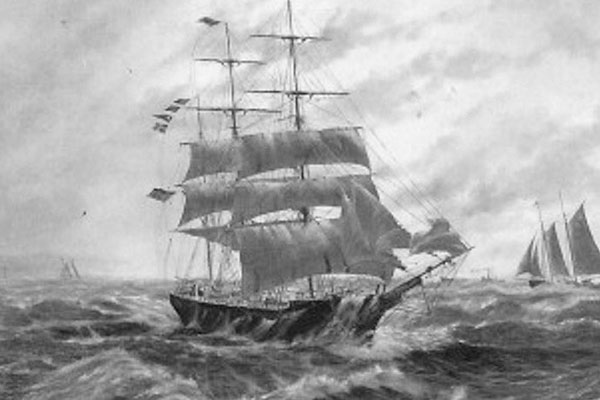
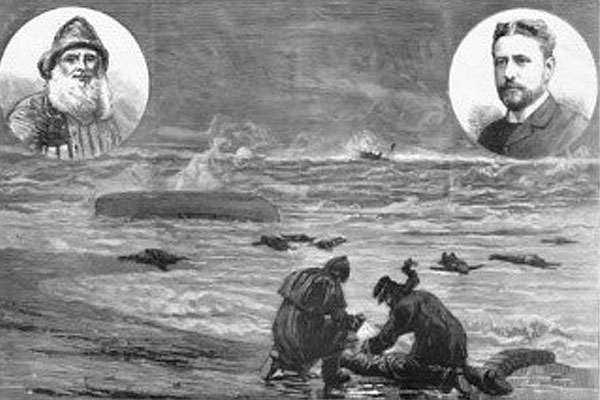

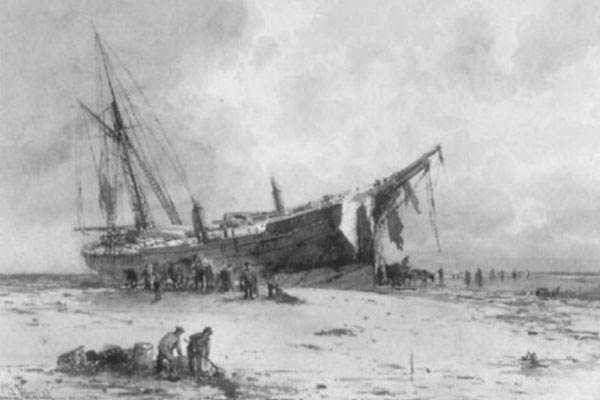
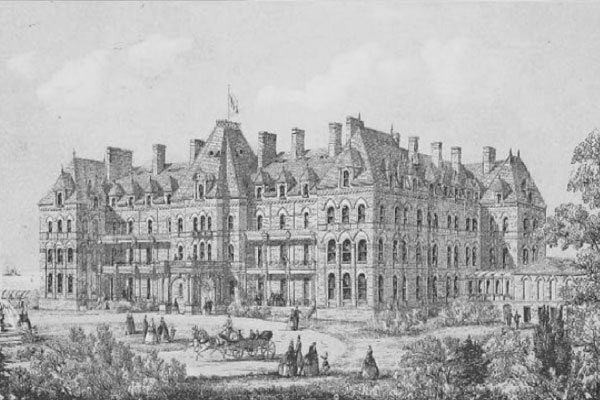
The Mexico lifeboat disaster was one the RNLI’s worst-ever tragedies. It was a German cargo ship, a barque that was wrecked in a full WNW gale off Southport on 9 December 1886. It was on its way from Liverpool to Guayaquil in Ecuador and was caught in a storm and dropped anchor in the Ribble estuary. The ship’s anchor broke loose. Fearing the vessel would be blown on to the sandbanks to her doom, the Captain sent out distress signals. The Lytham, St Annes and Southport Lifeboats answered the call. They rushed to save the crew of the Mexico – which by this time was being blown down the River Ribble.
Southport’s Eliza Fernley was the first lifeboat to be launched in response to the Mexico’s distress signals. As the Eliza Fernley reached the stricken vessel, the rough seas and terrible gale capsized her. Only two of the 16 crew survived, Henry Robinson and John Jackson, who had been trapped under the boat after it overturned. They survived by clinging to the keel of the boat and swimming back to shore to raise the alarm. Two hours later, the lifeboat was found washed up at Birkdale. Shortly after the Southport lifeboat was launched, the St Annes lifeboat Laura Janet set sail. No one knows exactly what happened to it – except that the next morning the lifeboat was found washed ashore. Three dead bodies were still clinging to it, and all the crew of 13 men were lost. A third lifeboat, the Charles Biggs, was launched on her maiden rescue to assist the crew of the Mexico. By this point, the Mexico has settled on her beam ends and the crew had strapped themselves to the rigging. The Charles Biggs rowed for a mile and a half to reach the Mexico and successfully rescued all 12 crew members. During the rescue of the Mexico’s crew, 27 of the 29 gallant Lifeboatmen drowned.
This was the worst tragedy, involving the greatest loss of life, in the history of the RNLI. 16 widows and 50 orphans were left behind. A major appeal followed to provide funds for the families of the deceased and for the erection of memorials. Generous donors included Queen Victoria (£100), Kaiser Wilhelm I (£250), the City of Hamburg, and various national newspapers. It was this fundraising which led to the first RNLI flag days. An 1891 appeal, bolstered by the press in the north-east of England, raised £10,000 in just 2 weeks. In the same year, Sir Charles Macara (1845-1929), a leading figure in the Lancashire cotton industry and resident of St Annes at the time of the Mexico disaster and his wife Marion organised the first Lifeboat Saturday, the first recorded charity street collection. It featured a parade of bands, floats and lifeboats through the streets of Manchester and raised over £5,000. Marion Macara formed a Ladies’ Guild to help organise the street collection and within 10 years, more than 40 Ladies’ Guilds had sprung up around Britain and Ireland, and the RNLI’s income had doubled.
Six memorials were erected, including on the promenade at St Annes, Duke Street Cemetery in Southport and St Cuthbert’s Church in Lytham. A memorial carved by the Edinburgh sculptor W B Rhind to five of the Laura Janet crew who lived in St Anne's was erected in the St Anne's parish churchyard above the grave of the five deceased crewmen. Rhind also sculpted the Grade II listed memorial located on St Anne's Promenade that portrays William Johnson, coxswain of the Laura Janet. A graveside memorial to seven crew members who lived in Lytham was erected in St Cuthbert’s Churchyard, Lytham. Another crew member is buried in Layton cemetery, Blackpool. Fourteen members of the Southport lifeboat, Eliza Fernley, are buried in Southport Cemetery. Also in Southport there is another Grade II listed lifeboat memorial commemorating the loss of the Eliza Fernley and her crew. Sir Charles Macara's gravestone stands close to the Laura Janet Memorial.
The bodies of the deceased lifeboat Crews were laid at the coach house of the Palace Hotel in Birkdale, which was used as a temporary mortuary following the tragedy. The coach house is now the Fisherman’s Rest Pub, named in memory of the lost lifeboat men and is now the only part of the original building left. There are 14 mermaids at the bar to represent the 14 lost souls of the Eliza Fernley, and plaques re telling the tale around the pub. Every year the Landlord of the Fisherman’s Rest reads out an ode to the lost lives and conducts a one-minute silence in recognition of their sacrifice.
The Mexico was refloated and sold for £45, becoming a temporary tourist attraction at Lytham St Annes. She was eventually lost in Scottish waters in 1890. The story of the wreck of the Mexico was featured in an episode of the BBC TV programme Coast, appearing in the fifth episode of the first series, first broadcast on 3 July 2005.
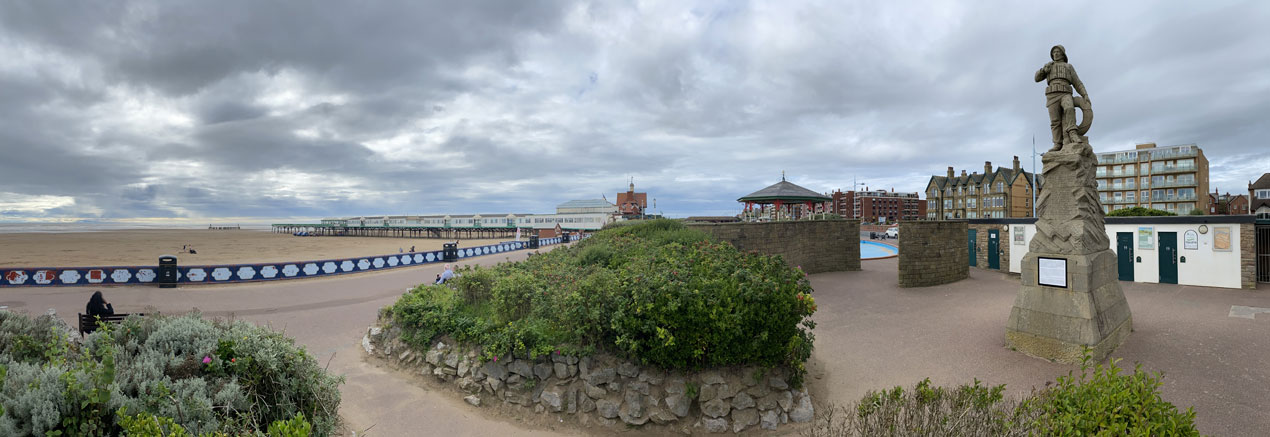
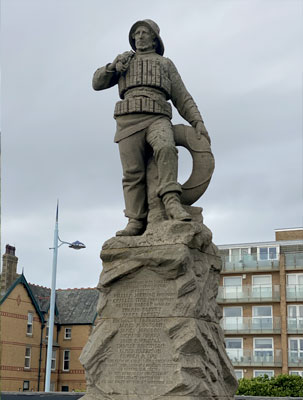
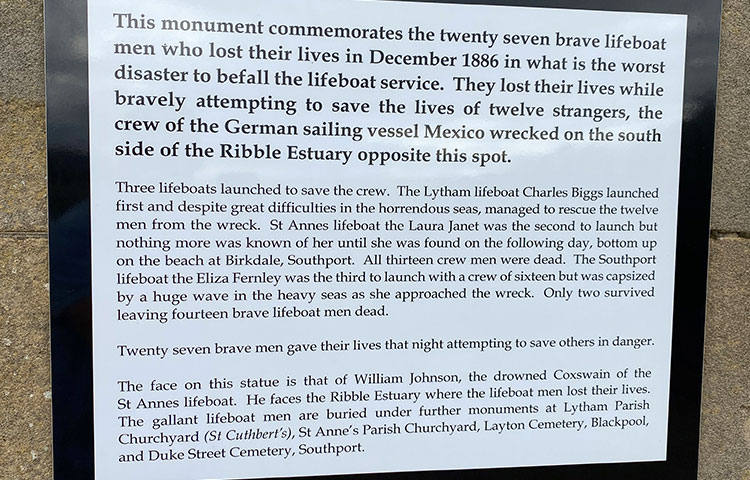
The Lifeboat Monument, St Annes, stands on South Promenade, St Annes, Fylde, Lancashire, England. It commemorates the death of 13 lifeboatmen from St Annes who were lost in the attempt to rescue the crew of the German barque Mexico that had been driven into a sandbank in a gale in December 1886. The monument depicts a lifeboatman looking out to sea and standing on a rock-like plinth.

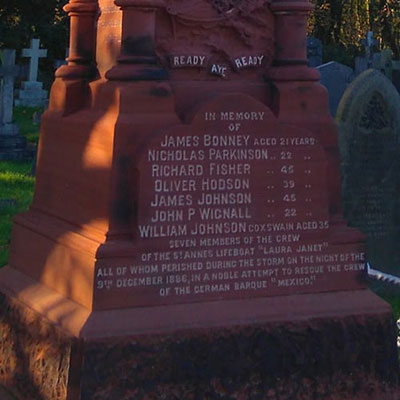
.jpg)
First two photos from the Memorial at St Cuthbert's Church, Lytham to the loss of the RNLI lifeboat Laura Janet 9 December 1886. Third photo on right. This stone monument is dedicated to James Harrison (aged just 19) in Layton Cemetery in Blackpool.
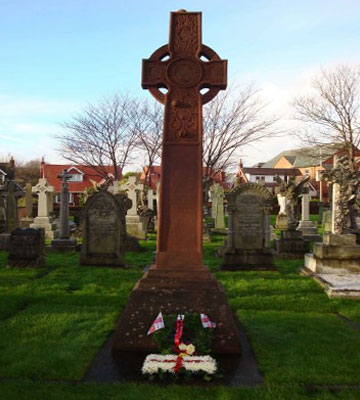
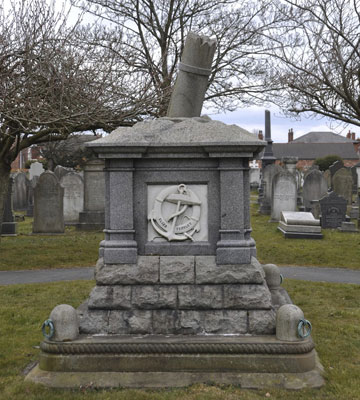
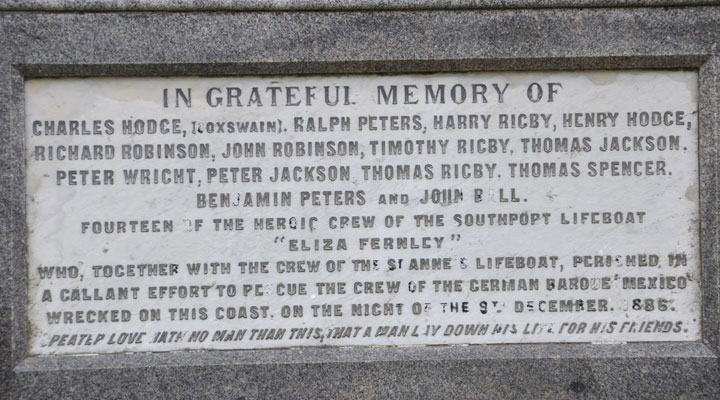
Left photo, this memorial marks the grave of six of the crew of the St Annes lifeboat, the Laura Janet at St Annes Parish Church. Centre and right photos, Memorial to the crew of the "Eliza Fernley" lifeboat, in Duke Street Cemetery, Southport, Merseyside. The lifeboat from Southport also lost 14 of its 16 man crew in the disaster.
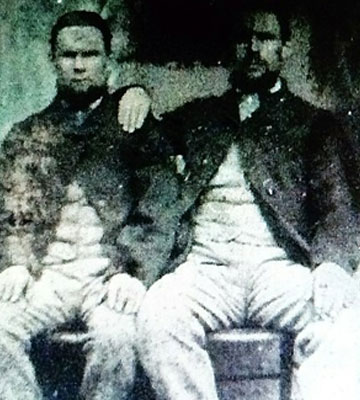


Left photo, Henry Robinson and John Jackson. The two survivors from the crew of the Eliza Fernley, Southport Lifeboat. Pictured circa 1890. Centre photo, Plaque on the Wall of the Old Lifeboat House, St Annes. Right photo, grave of Sir Charles Wright Macara that adjoins the memorial at St Annes Parish Church.


